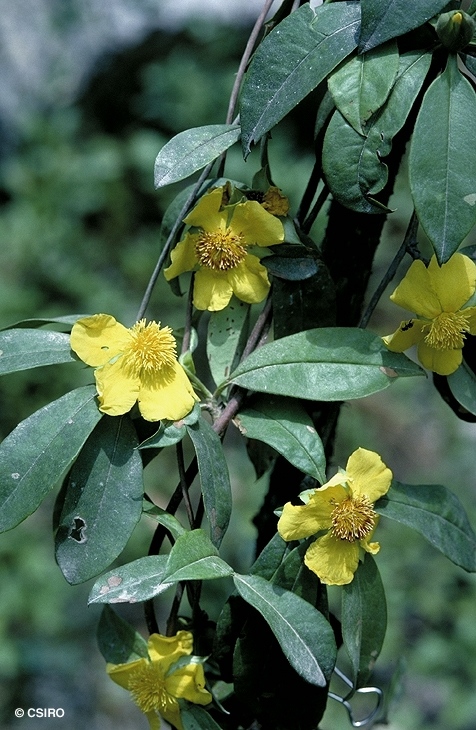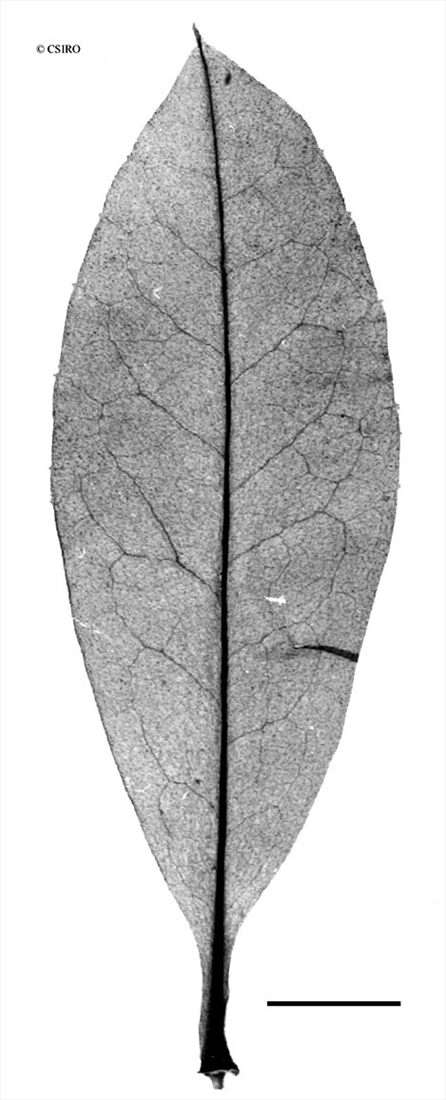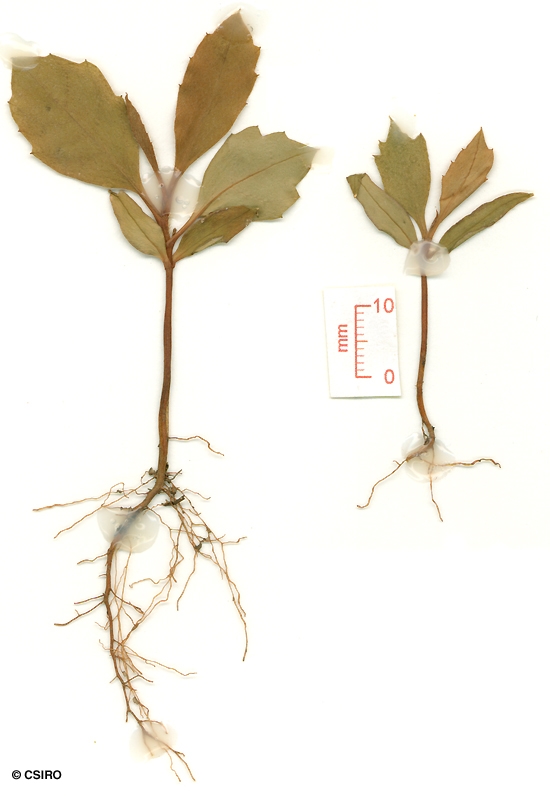Australian Tropical Rainforest Plants - Online edition
Hibbertia scandens (Willd.) Dryand.








Dryander, J.C. (1805) Annals of Botany 2 : 525.
Guinea Flower; Climbing Guinea Flower; Golden Guinea Vine; Vine, Golden Guinea; Snake Vine; Twining Guinea Flower
Vine stem diameters to 4 cm recorded.
Twigs marked by scars which encircle the twigs or are visible around most of the twig. Younger leaf bearing twigs clothed in pale prostrate hairs. Leaf blades about 6-9 x 2.2-3 cm, lateral veins difficult to distinguish, petioles very short or absent, distinctly channelled on the upper surface. Both the upper and lower surfaces of the leaf blade clothed in pale +/- prostrate hairs. Teeth (if present) on the leaf blade margins are usually sparsely scattered.
Flowers emit an obnoxious odour, each flower about 4.5-5 cm diam., solitary on the ends of short branches. Sepals dimorphic, the outer three about 25 mm long and the inner three about 20 mm long, the outer surface of all sepals clothed in pale sericeous hairs. Petals caducous, obovate, about 22 mm long. Stamens numerous, about 9-10 mm long, anthers about 3-4 mm long. Usually about three or four carpels per flower. Carpel + style about 12 mm long. Ovules about 6 per carpel.
Each fruit about 30 mm diam., consisting of 3-5 brown carpels surrounded by the remnants of the calyx lobes. Carpels dehiscent, each carpel containing up to 7 dark brown to black seeds, each seed completely enclosed in an orange or orange-red aril. Aril fimbriate or lobed at the apex, much larger than and completely enveloping the seed. Endosperm +/- granular. Embryo +/- globular, small, less than 1 mm diam.
Seed germination time 91 to 258 days. Cotyledons elliptic, about 7-22 x 2-7 mm, petioles +/- flattened, +/- clasping the stem. First pair of leaves with coarsely toothed margins, 1-4 teeth on each side. Stems and terminal buds clothed in long pale-coloured hairs. At the tenth leaf stage: leaf blade elliptic, about 10 x 3.5 cm, apex acuminate, base attenuate, both the upper and lower surfaces clothed in pale prostrate hairs, petiole about 1-1.5 cm long, edges +/- winged and the base clasping the stem. Leaf blade margin coarsely toothed with about 12 teeth on each side.
Occurs in CYP, NEQ, CEQ and southwards as far as south-eastern New South Wales. Altitudinal range in northern Australia from near sea level to 1350 m. Grows in wet sclerophyll forest and in disturbed areas in lowland, upland and mountain rain forest. Also occurs in New Guinea.
A commonly cultivated medium climber producing large yellow flowers.





